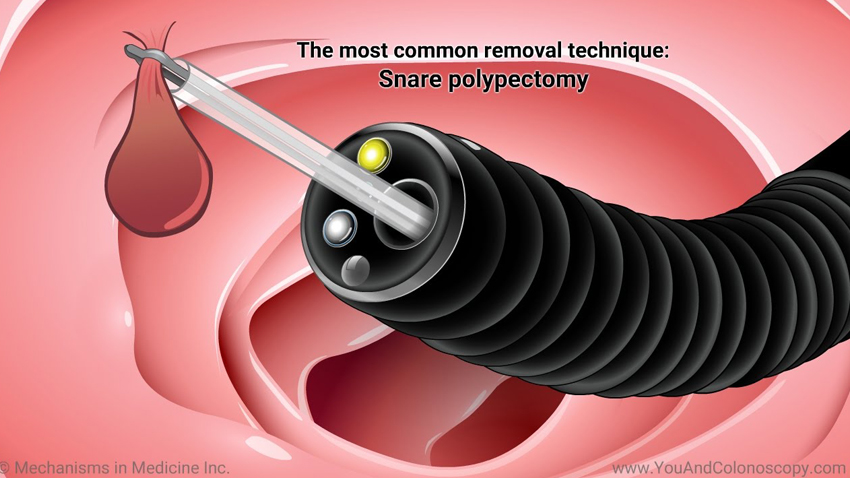Colonoscopy procedure involves passing a flexible and lighted viewing tube through the rectum, anus and through the entire length of the large intestine and sometimes in lower parts of the small intestine to examine any evidence of diseases. The symptoms of Colonoscopy are changes in bowel habits, blood in stool, bowel abnormality, etc.
Overview
A full length Colonoscopy is a medical procedure performed to view the inner lining of the rectum and the colon (large intestine). The procedure uses a long, tubular and flexible instrument inserted into the anus through the full length of the colon to check for any suspicious obstructions or growth inside.
Colonoscopy is not painful, but it may produce certain discomfort among patients as he/she may have to change positions to allow the scope advance through the colon smoothly. Small polyps found inside are usually removed with the colonoscope. If there are excessive stools or blood or secretions that obstruct viewing, they are removed with the help of the scope. Sometimes, air is pumped through the scope to clear any blockage in order to open the channel.
If there are abnormal growths, tiny brushes and forceps are put inside the colon through the anus to extract tissue samples for further examination. Once complete, the doctor withdraws the instrument slowly from the back of the patient and the anal area is cleaned. Air instilled inside during the procedure is allowed to pass out and the patient is kept under observation for sometime before he/she is released.
The common symptoms of Colonoscopy include acute persistent abdominal pain, changes in bowel habits and profuse rectal bleeding. The procedure helps to detect colorectal cancer in patients after the age of 50. Before Colonoscopy procedure, the patient has to meet certain obligations specified by the best gastroenterologist.
Before the Treatment
- Tell your doctor whether you have any medical condition like allergies to certain medications, lung diseases, heart conditions or pregnancy.
- Inform about the medicines you are having and whether you underwent barium x-ray examination in recent times.
- Notify the doctor about any bleeding problems or allergies to any anaesthetics or medications. The information will help your doctor plan out the procedure beforehand and the medications associated with it. Also, the patient is asked to sign a consent form before Colonoscopy.
- You should avoid taking any solid food 24-48 hours before the procedure. However, drink plenty of water and other liquids like broth, and juices to keep your body hydrated. Patients are generally given a strong laxative in the evening before the test to clear off bowel movement.
- After the patient is taken into the examination room, he/she is asked to lie down. Before inserting the scope, the anal area is thoroughly cleaned and it is made sure that there is no stool inside. Finally, the patient is ready for the procedure.
How is it performed
- During the procedure, patients are asked to lie on their left side with their lower back exposed. They are administered sedatives through a tube into the arm and after a while the patient goes to sleep.
- At first, the top gastroenterologist wears gloves and pour lubricator on it to make it slippery. He inserts the gloved fingers into the anus to check for any blockage or abnormal mass.
- If the opening is clear, he inserts a lubricated colonoscope and gently pushes it through the colon. If there is stool or blood or secretion in the channel, air is pumped inside to clear it out. He may occasionally press your abdomen or ask you change position to guide the scope through the colon without any difficulty.
- If the doctor finds any suspicious growth, tiny forceps are used to retrieve tissues samples from it for laboratory testing. However, small polyps are easily removed with the scope.
- The entire procedure takes 30-120 minutes to perform. Once it is over, he slowly removes the scope from the anal opening and gives some time to allow instilled air escape from it. Finally, the anal area is cleaned with tissues and the patient is kept under observation for sometime and is then discharged.
Recovery
The recovery time of Colonoscopy takes several hours. The doctor keeps the patient under observation until the effects of anaesthesia wears off. Usually, patients are discharged after some hours and they can resume normal activities and a usual diet otherwise instructed.
In most cases, many feel drowsy after the procedure. Therefore, someone should be present to drive the patient home. However, they experience considerable amount of gas passing and abdominal cramping. If polyps were removed during colonoscopy, then the patient may notice blood in their stools for a few days. In case of extreme discomfort, patients should inform the doctor right away.






Leave A Comment
You must be logged in to post a comment.